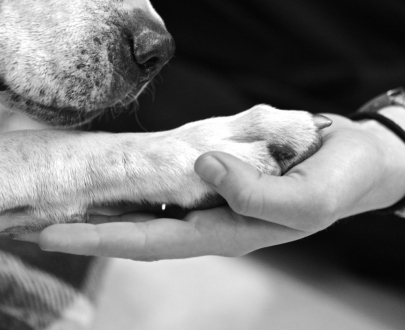 How does walking an animal in the park help human connection? Interestingly, one research study[1] found that walking a dog increased the owners “likability” to other people and became the catalyst for an increase in friendly human interactions. This occurred even when experimenters controlled for the friendliness of the dog, the “cuteness” of the dog and the appearance of the owner. They used highly trained dogs who ignore other people and animals, and included less-appealing looking dogs as well as dishevelled looking owners. The increase in human connection is one of the top reasons that having a companion animal improves mental and physical health by helping to reduce stress and other health risks.
How does walking an animal in the park help human connection? Interestingly, one research study[1] found that walking a dog increased the owners “likability” to other people and became the catalyst for an increase in friendly human interactions. This occurred even when experimenters controlled for the friendliness of the dog, the “cuteness” of the dog and the appearance of the owner. They used highly trained dogs who ignore other people and animals, and included less-appealing looking dogs as well as dishevelled looking owners. The increase in human connection is one of the top reasons that having a companion animal improves mental and physical health by helping to reduce stress and other health risks.
Animals are used in a variety of ways to foster social and emotional well-being in children and youth. Here are some ideas supported by research:
Pets in the Home
Studies that link pets with the social and emotional development of children find a connection between self-esteem, empathy and emotional support. Having a pet encourages children to learn at an early age how to care for and nurture a dependent animal. Accomplishing tasks appropriate to their age, when taking care of the pet with their parents, makes a child feel more competent and fosters self-esteem. In addition, empathy is a quality that is nurtured through relationships with animals. According to research out of Cambridge[2], it is possible that by interacting with pets children learn to understand the feelings and needs of animals which is then transferrable to other people. Further studies[3] report that companion animals can provide emotional support, which is an important aspect in the healthy psychological development of all children.
In the Classroom
Children and adolescents can learn about themselves and each other through interaction with animals. Guinea pigs in a classroom setting have been found[4] to improve social functioning of children with Autism Spectrum Disorder. And classroom dog visits offer unique learning opportunities. Dr. Ty Binfet, part of the Faculty of Education at the University of British Columbia Okanagan, does research with dogs and students. He suggests that dogs are an effective barometer for students’ behaviour in a classroom setting and students can learn to “read” (notice) a dog’s behaviour and adjust their own behaviour accordingly. For example, if the dog reacts to high noise levels or too much commotion, students can learn to recognize signs of discomfort in dogs and adjust their behaviour. Educators and parents can encourage perspective-taking by asking students question such as: “When Buddy goes to the door, what might he be saying about the noise in our classroom?” If possible, Dr. Binfet recommends using therapy dogs to visit classrooms as their training lends itself to these situations.
On the “Farm”
Equine-facilitated learning is a specialized intervention that research[5] shows enhances social competence. Horseback riding provides a rhythm that has been found to soothe, focus, and improve the moods of children with autism. Feeding and grooming horses also encourages social interaction, cooperation, and personal responsibility in children.
To explore if pet dogs act as a catalyst for human social interaction and ultimately enhance feelings of well-being, British researchers completed two experiments that resulted in over 1350 observations of human interaction (with dogs and without). "Conditions where the dog was present elicited a very large increase in both non-verbal and verbal interactions."
Published in The Waltham Book of Human-Animal Interactions, authors Endenburg and Baarda review the literature on the relalationships of animals and humans with the specific lens of child development.
Of note; Poresky and Hendrix (1990) found that 3-6 year-old pet-owning children achieved higher empathy scores than their non-pet-owning counterparts.
Boris Levinson (1978) wrote about the link between pet ownership and emotional support in both children and in the elderly.
In a study looking at animal-assisted interventions for childen with autism (2013), researchers O'Haire, McKenzie, McCune, and Slaughter found significant improvements in social functinging and decreases in social withdrawal occured during 8 weeks of animal exposure in the classroom as compared to a control group.
Researchers Pendry and Roeter published (2012) an experimental trial to demonstrate the positive effects of equine facilitated learning on social competence with 5th - 8th grade children.